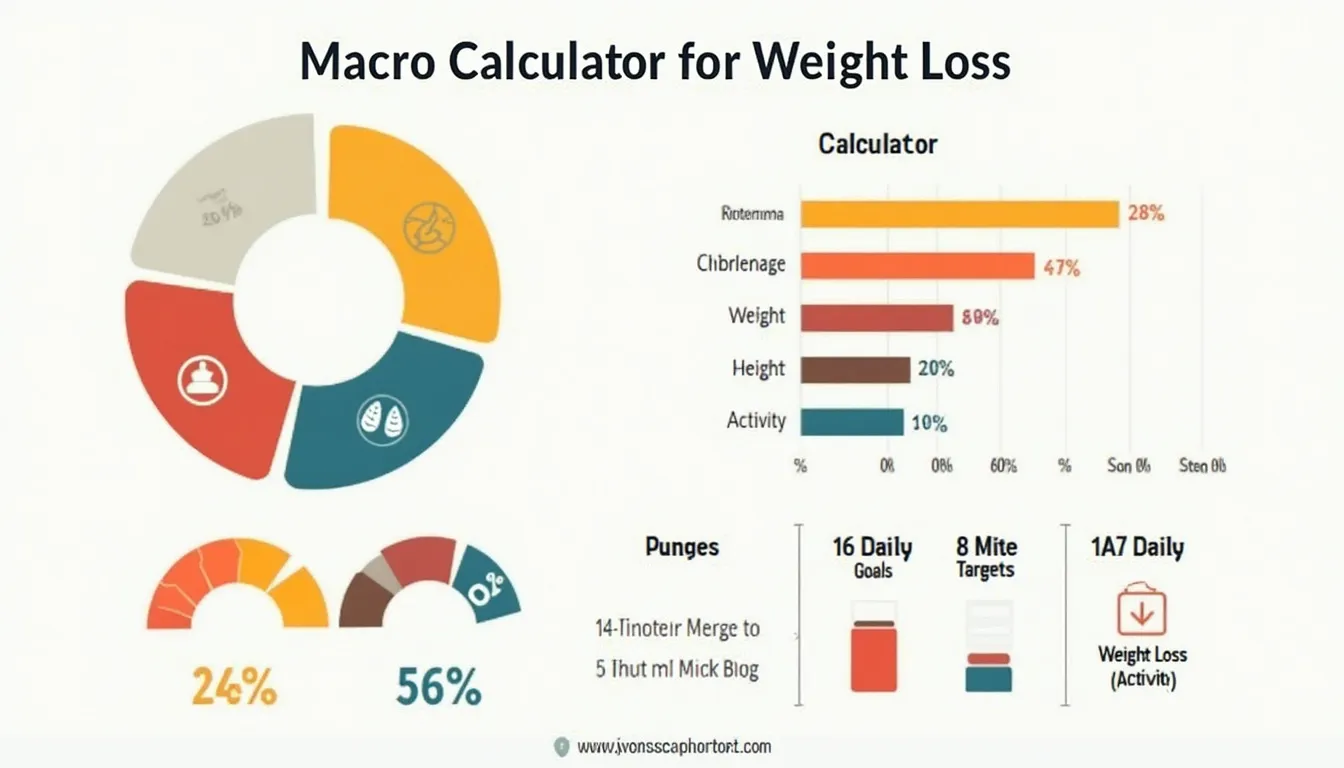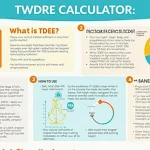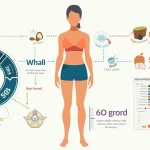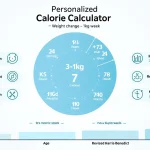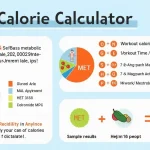Macro Calculator for Weight Loss
Is this tool helpful?
How to use the tool
- Units – Pick metric or imperial. Samples: metric 82 kg & 178 cm, imperial 154 lb & 65 in.
- Age – 13-120 y. Samples: 22 y, 57 y.
- Gender – Select male / female for correct BMR formula.
- Weight – 30-300 kg (66-660 lb). Samples: 64 kg, 210 lb.
- Height – 120-250 cm (47-98 in). Samples: 160 cm, 72 in.
- Activity level – Sedentary 1.2 → Extra-active 1.9. Match your weekly exercise.
- Weight-loss goal – Pick deficit 250-1000 kcal (0.25-1 kg/week).
- Protein % & Fat % – Enter preferred split; carbohydrates auto-fill the balance.
Formulas applied
Basal Metabolic Rate
$$\text{Male: }10w+6.25h-5a+5$$
$$\text{Female: }10w+6.25h-5a-161$$
Total Daily Energy Expenditure
$$\text{TDEE}= \text{BMR} \times \text{Activity Factor}$$
Calorie target
$$\text{Intake}= \text{TDEE} – \text{Deficit}$$
Macronutrient grams
$$\text{Protein}= \frac{\text{Intake}\times P\%}{4}$$ $$\text{Fat}= \frac{\text{Intake}\times F\%}{9}$$ $$\text{Carbs}= \frac{\text{Intake}\times C\%}{4}$$
Example 1: Metric, moderate plan
- 40-y female, 68 kg, 172 cm, activity 1.55, deficit 500, P 32 %, F 28 %.
- BMR = 1 394 kcal.
- TDEE = 2 160 kcal.
- Intake = 1 660 kcal.
- Protein 133 g, Fat 52 g, Carbs 166 g.
Example 2: Imperial, mild plan
- 28-y male, 200 lb (90.7 kg), 70 in (177.8 cm), activity 1.2, deficit 250, P 30 %, F 25 %.
- BMR = 1 883 kcal.
- TDEE = 2 260 kcal.
- Intake = 2 010 kcal.
- Protein 151 g, Fat 56 g, Carbs 226 g.
Quick-Facts
- Safe weekly loss: 0.5-1 kg (CDC, 2023).
- Minimum healthy intake: 1 200 kcal women, 1 500 kcal men (Harvard Health Publishing, 2021).
- Protein range: 10-35 % of calories (Dietary Guidelines for Americans, 2020).
- Mifflin-St Jeor gives ±5 % error vs. indirect calorimetry (Frankenfield, 2005).
FAQ
What does the macro calculator output?
It shows BMR, TDEE, calorie target, and daily grams of protein, fat, and carbs—rounded for easy meal planning.
Why impose a 1 200-kcal floor?
Intakes below 1 200 kcal risk nutrient deficiencies and metabolic slowdown (Harvard Health Publishing, 2021).
Which activity factor should you pick?
Match your typical week: desk job 1.2, 3-5 gym sessions 1.55, daily heavy labor 1.9 (ACSM, 2022).
How big a deficit is safe?
“A daily deficit of 500-1000 kcal can produce a safe weight loss of 1-2 lb per week” (USDHHS, 2020).
Can you change macro ratios?
Yes—enter new protein and fat percentages; the tool recalculates carbs to keep totals at 100 %.
How often should you recalculate?
Update every 4-6 weeks or after ≥5 % body-weight change to maintain accuracy (Hall, 2019).
Does higher protein protect muscle?
Intakes ≥1.6 g/kg spare lean mass during dieting (Morton et al., 2018).
Where do you find macro values for foods?
Use the USDA FoodData Central database, which lists grams of protein, fat, carbs per portion (USDA, 2023).
Important Disclaimer
The calculations, results, and content provided by our tools are not guaranteed to be accurate, complete, or reliable. Users are responsible for verifying and interpreting the results. Our content and tools may contain errors, biases, or inconsistencies. Do not enter personal data, sensitive information, or personally identifiable information in our web forms or tools. Such data entry violates our terms of service and may result in unauthorized disclosure to third parties. We reserve the right to save inputs and outputs from our tools for the purposes of error debugging, bias identification, and performance improvement. External companies providing AI models used in our tools may also save and process data in accordance with their own policies. By using our tools, you consent to this data collection and processing. We reserve the right to limit the usage of our tools based on current usability factors.
